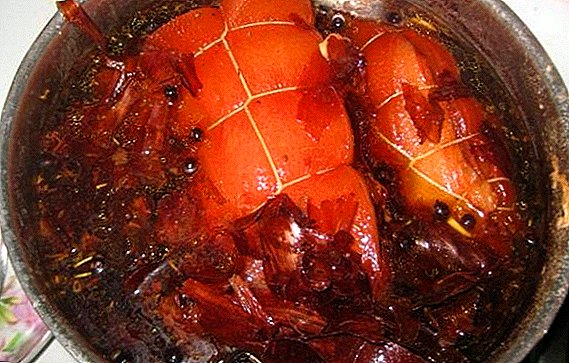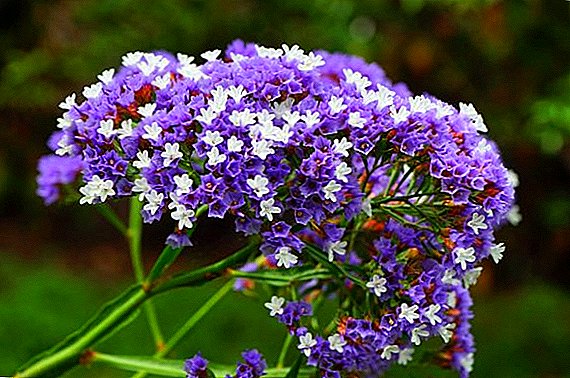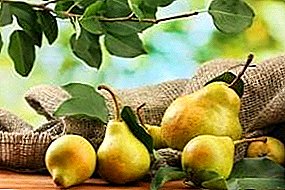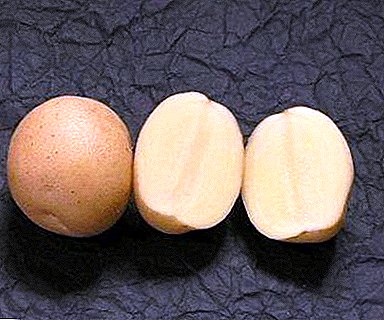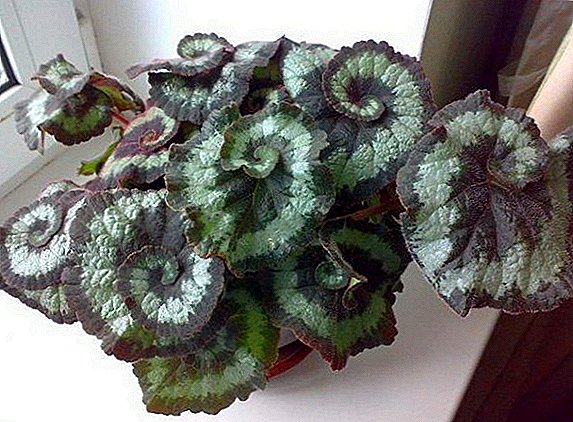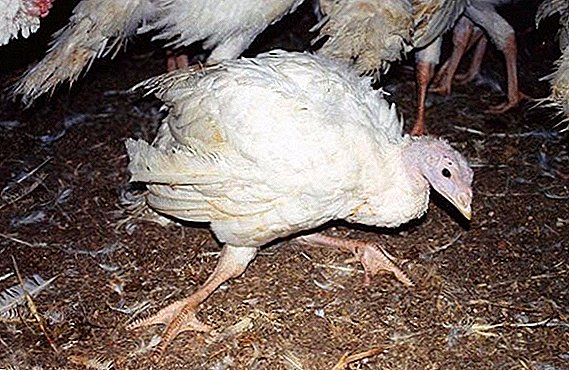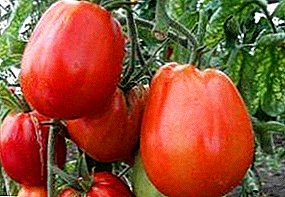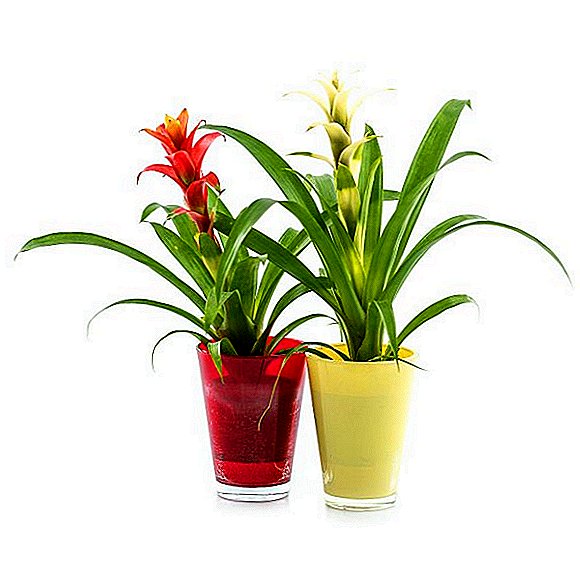 Guzmania pleases flower growers not only with decoration, but also with quite an exotic appearance. The main highlight of the plant is considered to be very elegant and unique flowering. In this case, timely and proper transplantation is one of the few measures that helps prepare the plant for this process, as well as preserve the flower for the next season. This article will discuss in detail the basic principles of proper Guzman transplantation, as well as the main difficulties of the procedure.
Guzmania pleases flower growers not only with decoration, but also with quite an exotic appearance. The main highlight of the plant is considered to be very elegant and unique flowering. In this case, timely and proper transplantation is one of the few measures that helps prepare the plant for this process, as well as preserve the flower for the next season. This article will discuss in detail the basic principles of proper Guzman transplantation, as well as the main difficulties of the procedure.
Why and how often do I need to transplant
Like other members of the Bromeliad family, Guzman is an evergreen epiphytic plant of one cycle. This means that after breeding, it slowly fades and dies, leaving numerous babies. That is why timely and proper plant transplantation is the main condition that ensures its long-term preservation and flowering. Without this, at the end of the life phase the flower perishes irrevocably.
Did you know? Guzmania was named after the famous Spanish zoologist and botanist Anastasio Guzmán, who made a huge contribution to the study of the flora and fauna of South America.
Despite the fact that after the withering of the flower spike, the plant can develop up to one year, it eventually begins to wither and throw off the foliage, giving all its strength to the development of root processes. Therefore, after flowering, the old shrub is often removed and cut into daughter shanks after that. Otherwise, the decorativeness of the bush is reduced significantly.

It is possible to safely transplant Guzmania up to 2 times a year, and there must be at least several months between each procedure. During this period, the flower will fully adapt to the new conditions and soil microclimate. However, most plants are transplanted no more than 1 time in 3-5 years. This is the period for which from a small germ-child, Guzmania turns into an adult plant, ready for flowering and the formation of a new bush.
How to transplant in another pot
Often, the transfer of Guzmania to a new pot does not cause any difficulties even for an unprepared grower. However, sometimes many people fail to carry out this procedure correctly, which is why the bush has already died within a few weeks after planting. The flower is gentle enough, so the procedure must be resorted to with extreme caution.
Did you know? Guzmania is one of the most effective natural adsorbents - only one plant can effectively clean a small room of an average apartment from dust and dirt.
Season
Since indoor species are often grown in conditions close to optimal, it is possible to replant a shrub into a new container throughout the year. However, it is best to start this procedure in early spring. At this time, there comes a natural increase in daylight, which successfully affects rooting and the subsequent development of the split.
In addition, often by this time, the lateral branches grow about 10-15 cm in length, which is the most optimal size for their imminent rooting. In winter, as a rule, Guzmania is not transplanted. Exceptions are only those cases when children become large enough for a separate pot. However, in such a combination of circumstances, young seedlings are provided with additional coverage and more painstaking care.
Pot selection
Any garden containers are suitable for transplanting, but most often they are all kinds of plastic, glass, metal or ceramic pots. The main requirements for such vessels are complete inertness to the soil mixture and plant excretions, as well as a full drainage hole.

A new pot should be small, with a diameter and height of about 15 cm. The flower does not need excessively large containers, its root system is incapable of active growth and increase in weight. The shape of the pot bush is also undemanding.
Soil selection and preparation
For transplanting Guzmania, only light substrates are used; for this purpose, specialized soil can be used for Bromeliads.
You can prepare this mixture yourself, for this you need to mix in equal parts:
- peat;
- sod land;
- river sand or vermiculite;
- crushed sphagnum moss.
To improve the mechanical properties and mineral composition, such mixtures are fertilized with a small amount of charcoal and pine bark.
Read the main secrets of the successful cultivation of gummania in the house.
Prepare the substrate can be a different recipe, for this connect equal parts:
- sod land;
- crushed pine bark;
- coarse river sand.
Before planting, these substrates must be sterilized. This measure allows you to destroy the pathogens of various infections, as well as the larvae of pests. Otherwise, the immunity of the young plant will not be able to cope with environmental challenges.
Carry out the procedure in several ways, but most often for sterilization of soil mixtures used:
- steaming in the microwave, 5-10 minutes;
- roasting in the oven, at + 125 ... + 145 ° С, for 20-30 minutes;
- freezing at -20 ... -25 ° C, for 3-4 days;
- wetting 2% solution of potassium permanganate.
Drainage
Effective drainage of a flowerpot is a prerequisite for growing all Bromeliads. Due to the fact that the root system of the family members is not able to create a dense and dense net of the root mass, when grown in a pot, the above-ground weight can often exceed the weight of the pot, which reduces its stability.

In this case, the drainage becomes a counterweight, which protects the flower from falling. Also, drainage makes it possible to remove excess moisture from the soil, which has a detrimental effect not only on the properties of the soil, but also provokes a variety of putrefactive lesions.
A variety of dense structures are used as drainage, most often small gravel and crushed stone are used for this. Often it is replaced by broken brick or crushed remnants of ceramics. Lay drainage on the bottom of the pot, in front of the soil, a layer of about 3-4 cm.
Tools for work
To transplant correctly, you will need the following set of garden tools and utensils:
- sharp garden or office knife;
- cutting board;
- a small garden pot or a deep pot.
Important! During transplantation, it is necessary to be attentive enough to the root system of Guzmania, any damage to it will certainly lead to inhibition of growth and subsequent flowering of the bush.
Transplant procedure
Often the transplant of Guzmania causes many difficulties for gardeners, since not many succeed in successfully transplanting the children. In fact, in compliance with all the basic rules, this procedure is not only feasible, but also has almost one hundred percent success. This makes it possible to cultivate the flower, even beginner growers. Guzmania transplant is performed in two ways. The easiest way is to remove the old plant from the pot, leaving the young side branch.
For this:
- Shrub gently removed from the pot and placed on a chopping board.
- With the help of a sharp knife on the bush all the old parts are cut off.
- The cut bush is placed in the old pot, after which all the gaps are carefully covered with fresh substrate.

Despite its speed, only beginner growers use such transplantation, and only at the first generation of a bush. This is explained by the fact that in this case the replacement of the substrate does not take place, due to which it accumulates a variety of toxins and other by-products of Guzmania growth. And this creates a favorable environment for various infections. In addition, the substrate tends to gradually become impoverished, therefore its full or partial replacement is a necessary measure.
The most frequently transplanted Bromeliads in a more laborious way, for this:
- The plant is removed from the pot, and then separated from it on the cutting board of the children.
- The resulting cuttings are dried on a dry surface for 1 hour.
- In order to accelerate the rooting of seedlings, they are soaked in a growth stimulant solution (Zircon, Kornevin, etc.) for about 6 hours.
- The flowerpot with a drainage layer on 2/3 is covered with substrate, and then a small depression is created in the vessel.
- In the recess is placed a sprout, after which the plant is covered with soil.
- Next, moisten the soil, and the container is covered with a dome of transparent polyethylene.
- After 2-3 weeks in a warm, well-lit place, the seedlings take root, after which the dome can be removed, and the flower transferred to normal maintenance.
Important! It is forbidden to compact the soil during transplantation; this may cause damage to the root system of the seedlings, which almost always threatens them with death.
Further care
Proper cultivation of Guzmania involves compliance with the following rules:
- the pot is settled only on the windowsill in the east or west side;
- in summer, the optimum air temperature should be within + 20 ... + 27 ° С, in winter - not less than + 16 ° С;
- Guzmania likes high humidity, so it must be sprayed. In the summer, the procedure is carried out 1-2 times a day; in winter, the frequency of moistening is reduced to 1 time per week;
- they water the bush in a special way; water is not poured into the soil, but directly into the rosette of leaves. A few minutes after watering, excessive moisture must be removed, otherwise the bush will be subjected to putrefactive lesions. In the summer watering is carried out every day, in the winter - no more than 2 times a week. To do this, use only pure and distilled water, room temperature;
- the bush does not like direct solar radiation, therefore it is contained in the penumbra;
- to stimulate flowering, the flower must be fed, using special mineral mixtures for bromeliads for this. Carry out the procedure 1-2 times per season, and only before flowering.
Answers to user questions
Today, the bright and elegant Guzman bush can be found quite widely, but not every grower can maintain the vitality of a plant for several cycles and enjoy its flowering. Often the reason for this are a variety of errors in care, which inhibit not only the metabolism of the bush, but also provoke all sorts of ailments. Below you can see the most popular questions that arise during the care of the plant.

Do I need to replant after purchase
Despite the fact that bromeliads grow rather slowly, many gardeners start to transplant it from the purchased pot as soon as possible. Often, these containers do not differ in decorative and exquisite appearance, and also do not have resistance to damage and mechanical stress. But, often this measure is not vital, so it can be carried out as needed. Exceptions are only those cases when the purchased pot is too small for the subsequent growth of the bush.
Can I transplant during flowering
Although transplanting a purchased plant into a permanent pot is a common measure, it is carried out only until flowering. During this phase, any active influence of the biotic or abiotic type provokes the inhibition of the growth and metabolism of the hive. Quite often it affects the flowering and the subsequent formation of children, which almost always leads to the irretrievable destruction of the bush.
See also the description and photo of the main types of guzman.
Why the plant does not take root
The most common mistakes that lead to the deterioration of rooting Gusmania:
- for planting use seedlings with a root system of less than 1.5 cm or excessively young children, with a length of less than 10 cm;
- the cut places are left untreated, this leads to infectious lesions with a seedling. In order to avoid this, sections are greased with garden pitch or chopped wood ash;
- during transplantation, the plant has undergone mechanical damage;
- rooting is performed at low temperatures or with a lack of moisture;
- for reproduction, parts of the bush damaged by pests or infections are used.



